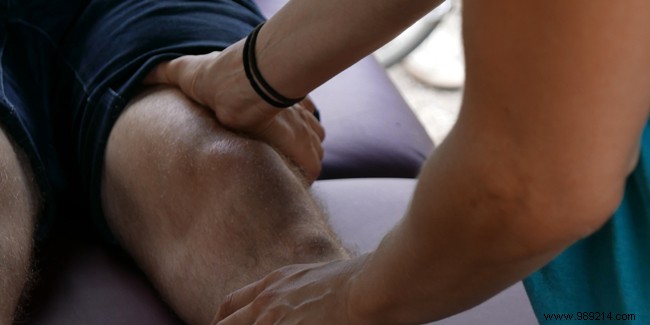
Micro-physiotherapy is a specialty derived from physiotherapy. This massage technique is also performed by the same professionals. Still little known, micro-kinesitherapy is beneficial for relieving old injuries. How did this therapy come about? How is it practiced? What are the benefits? Here's everything you need to know about micro-therapy.
Micro-physiotherapy is a discipline that complements physiotherapy. The method is little known to the general public, yet it has existed since the 1980s. It was born from the expertise of Daniel Grosjean and Patrice Benini, two French physiotherapists. By practicing their specialty, they have found their limits. Too often, patients came back with the same problems. They wanted to remedy this by developing a new method of massage. This mixes different techniques, namely:
Micro-kinesitherapy can be practiced after training and only by health professionals including physiotherapists and osteopaths.
Micro-kinesitherapy is a method by which health professionals can identify traces of trauma. This can have several origins since it can be:
In the vast majority of cases, these traces are not visible through medical imaging. Moreover, they can come from an injury or an emotional shock (separation, death, harassment, etc.). Yet they cause pain and discomfort. To detect them, the practitioner uses a specific technique called micro-palpation. It stimulates the affected area through micro-massages and helps the body heal itself.
Micro-kinesitherapy makes it possible to overcome pain and minor dysfunctions that affect well-being and sometimes health. Indeed, these so-called scar traumas can be the cause of sprains, tendonitis, fatigue, sleep disorders and even eczema. Micro-therapy is recommended to treat these pains that last. This therapy is recommended to relieve all the symptoms that persist. It also helps reduce stress and anxiety, and get back in shape. Moreover, micro-kinesitherapy is often prescribed in addition to drug treatment to reduce side effects.
Micro-kinesitherapy is a specialty that can be practiced on all patients. Age and state of health are in no way contraindications. Micro-kinesitherapy is offered to people affected by:
Micro-kinesitherapy is also recommended for children because it helps to overcome sleep disorders, concentration disorders or even eczema. In infants, it helps treat colic and gastric reflux.
Micro-kinesitherapy sessions take place almost like traditional sessions with a physiotherapist or osteopath. During the first visit, the practitioner inquires about pain, symptoms and possible dysfunctions. He asks the patient about his medical history and learns about the treatments in progress. The objective is to define the cause of the trauma but also to understand why it lasts.
Then comes the first physical check-up during which the healthcare professional will take stock of the patient's physical condition. He performs the first micro-palpations which allow you to know if he is treating the right area. Depending on the feedback from his patient, he will progress and adapt the massages. At the end of the first session, the practitioner defines the number of sessions to be planned and their rhythm. A session lasts approximately 40 minutes. Some, especially for children and the most fragile people, are limited to 30 minutes.
It is not uncommon for patients who have had recourse to micro-kinesitherapy to subsequently have an annual session. This makes it possible to make a point but also to improve the well-being of the patient.